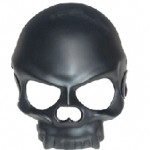Fuel gauge on F1 cars
- This topic has 6 replies, 6 voices, and was last updated 11 years, 1 month ago by
DavidS.
- AuthorPosts
- 27th March 2013, 20:18 at 8:18 pm #132956
 dragollParticipant
dragollParticipantIn @keithcollantine debate/poll for team orders, he threw in a comment that I think deserves to be highlighted:
But Lewis Hamilton does not need a dozen radio messages per race telling him to save fuel – he needs a fuel gauge.
It also strikes me why F1 cars don’t have a fuel guage. At the moment, teams’ radio messages to their drivers and update them on whether they’re on target with fuel management. Further to this, it comes at inopportune times, when drivers are trying to dice to get past, however, if the driver had an indication of fuel laps left, then the driver is free to manage this situation himself.
The basic fuel gauge on a car won’t suffice, because with anything in F1, it isn’t accurate enough, because F1 teams want to have enough fuel left in the car to give the FIA a fuel sample and not much more.
However, a lap counter of how many fuel laps are estimated to be remaining would be the perfect tool for a driver, and is not new concept, as it is already implemented in many F1 games such as F12013.
I’d also put forward that if the driver had control, it may actually contribute to more overtaking manouvres, because drivers who know they’re stuck behind a car, but cannot overtake can then go into fuel saving mode, and then there are situations when you have a car following, then you have the option to fend off by using a little more fuel or realising the overall picture, allow the driver past, bide your time to the next pit stop when you can sort out a few minor handling gremlins and try again.
27th March 2013, 20:23 at 8:23 pm #230642 Bradley DowntonParticipant
Bradley DowntonParticipantI’m pretty sure they mentioned this during free practice for Malaysia.
They don’t have fuel gauges, or speedo’s (I know they have it on the steering wheel but I mean an actual speedometer) because it adds extra weight.
28th March 2013, 5:45 at 5:45 am #230643F1Yankee
Participanta conventional floating gauge is borderline useless in any street car. that’s not an exaggeration – you can only get a relatively accurate measurement on a stationary car on level ground. race car tanks are baffled to lessen fuel sloshing around, which upsets handling and starves the fuel pickups, making a float unusable anyway.
instead of a float, they carefully meter the amount of fuel pumped out of the fuel cell. fuel returned to the cell from fuel injection excess and cooling circulation is also metered.
no fuel gauge is used in the car because it’s redundant. the information is relayed to the pits, and they advise the driver accordingly. having a gauge would only take up valuable space and driver attention. i hazard to guess the digital readout in any f1 car can be set to display a rough fuel level if needed in an emergency situation.
28th March 2013, 10:40 at 10:40 am #230644DavidS
ParticipantWhat F1Yankee said.
The effort it takes to manage fuel during the race is much more than the driver can handle.
The least amount of calculation that you could make the driver perform with fuel consumption is what I’ll call “end of race delta.” This is the difference between the number of laps remaining, and the number of laps of fuel is available, it would be expressed as a simple number, plus or minus, and probably to no more than one decimal place. Seeing -1.3 would mean that you will run out a bit over one lap from the end, whereas +1.3 would give you a lap and a bit of fuel spare, which you can use if you need more power.The real reason why the team does the calculations is that they can be more accurate, take into account strategy, and can take into account unexpected variances like safety cars, traffic, weather. The team will know how other cars are doing, and adjust their strategy to accommodate. For instance, if your driver is in fuel saving, and a quick driver is closing the gap, you’ll be able to see that long before your driver can, so you can tell him to use more of the engine to maintain the gap.
The engineers are simply better at it than the driver ever will be, so it doesn’t make sense to include a redundant gauge.The engineers can also work out the best settings to put the engine on, something which the driver will only be able to blindly guess.
28th March 2013, 15:04 at 3:04 pm #230645Anonymous
InactiveWell, just an idea here… why not measure the fuel in lbs. like in airplanes?? I think it would be easier to place a scale of some sort under the fuel cell and calculate the weight of the fuel inside. I guess it would be hard though taking into consideration the g-forces but, hey it´s just an idea…
28th March 2013, 16:41 at 4:41 pm #230646matt90
ParticipantFrom what I’ve just read, although planes often present the fuel readings in terms of weight, they don’t actually weigh the fuel. Instead they calculate it having taken readings of volume and density, among many other.
29th March 2013, 2:54 at 2:54 am #230647DavidS
Participant@JB
First of all, fuel is measured in kilograms in F1, because it’s density changes with temperature, so litres would be innacurate. Secondly, lbs is an imperial unit, SI (international system) is used in engineering applications everywhere but the United States (and some other small African country).Thirdly, and this is the most important. Weight is the gravitational force of a mass. A 10 kg mass of fuel is the same anywhere in the universe, but it’s weight changes depending on the gravitational force exerted on it. That same 10kg mass of fuel on the moon will weigh approximately 1/6th of what it does on earth (1.666kg)
The G forces in a Formula One car will change the weight of the fuel in the car as it’s going over crests, dips, bumps. The fuel is moving in the fuel tank all the time, which means that getting an accurate weight reading would be challenging.
Also, fuel flow needs to be monitored anyway by the ECU to determine the correct air/fuel mixture. That bit of data can be used to determine fuel consumption as well. A set of scales would be redundant, adding unnecessary mass to the car.
In aircraft, they also use fuel flow to determine consumption, not scales. Again, it’s impractical to use scales to weigh the fuel (as it’s stored in the wings), and would add extra weight (which isn’t a good idea for an aircraft). They use fuel mass, because that’s the critical measurement for aircraft for determining take off weight, and everything else (passengers, cargo etc) is expressed as a weight, so also expressing fuel as a weight saves converting units.
- AuthorPosts
- You must be logged in to reply to this topic.



